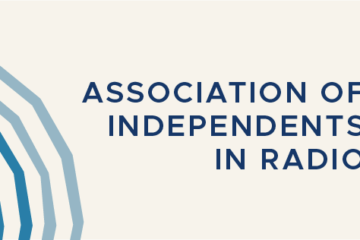The plans that went to Congress
| CPB | APTS, NPR, PBS and PRI |
|
|---|---|---|
Trust fund |
Recommends a trust fund and says it has examined options for financing it, but doesn’t name them. “We look forward to exploring these and any other alternatives Congress may suggest to make such a trust fund viable.” | A temporary financing mechanism would build up trust fund until it becomes large enough to pay out sufficient annual interest. As payout grows, federal appropriations could decline. Possible sources of income:
¶ Rent and sale of unused noncommercial spectrum. The FCC would empower trust to keep proceeds. If station goes dark, it could be sold after a waiting period. ¶Transfer fees on sales of commercial stations. Extensive trading of stations is expected when Congress loosens multiple ownership rules. ¶ Portion of proceeds from FCC spectrum auctions. ¶ Portion of fees on users of spectrum. ¶ Contributions from commercial broadcasters in exchange for relief from various FCC public-interest obligations attached to their own licenses. ¶Tax benefits for private donors to public broadcasting: tax credits or “front-loaded” deductions for multiyear gifts, with early benefits to donors. |
Continued federal appropriations |
Congress would approve (a) a base appropriation for services that now have “no realistic prospect of attracting sufficient external funding to become self-supporting,” including educational children’s programs and (b) a temporary transitional fund to cover costs of station mergers, severance pay. | No recommendation for appropriations. |
Cost reductions |
Incentives for consolidations and other efficiencies: No one in the field has authority to dictate economical arrangements, but CPB can give incentives through its grant programs. CPB will redistribute grant funds to insulate smaller stations from impact of funding cuts. CPB and other national organizations “will streamline their operations and become more entrepreneurial.”
¶ In public TV, CPB will provide funding “sufficient for one station” in each market. To maintain wide service, stations that are not viable without federal aid will get transition grants to help them affiliate with more secure stations. Public TV signals will be imported into areas unable to sustain full-service stations. Stations still receiving CPB grants will be required to spend more on shared programs and services than the amount of the grants. Mergers would save $17 million to $34 million a year by the year 2000. ¶In public radio, CPB will give grants only to stations that provide “the greatest level of listener service in a market.” Grants will go to overlapping stations only if they meet standards for audience size, service and program diversity. New stations will get grants only if they serve areas or audiences not served by public radio. Aid will continue to stations that provide the only broadcast service in their communities or a specific service in rural and minority communities. |
Cost-cutting is “an appropriate mechanism,” but the organizations decline to endorse CPB’s recommendations until they have been reviewed by stations, which will be done by early June. |
New revenue sources: ancillary income |
Ancillary income from product sales “can only be expected to bring in an additional $5 million a year.” | Only “modest” gains of ancillary income are foreseeable unless the system makes massive investments in ownership of program rights. |
New revenue sources: advanced TV channels |
Revenues from selling or leasing advanced TV (digital transition) channels could be a “substantial revenue opportunity,” but doesn’t have clear potential for immediate revenues. Value of channels will depend on public adoption of digital TV, which may be 10 years or more in the future. Disposing of channels could leave PTV without the ability to present high-definition TV. | Revenues from leasing advanced TV channels should go to pubcasters, but Lehman Brothers’ analysis indicates proceeds cannot be estimated now. |
New revenue sources: on-air advertising |
Advertising would be “a net money-loser,” losing $41 million on revenues of $163 million in TV in the year 2000, with even worse margins in radio, assuming that pubcasters keep certain restrictions on location, frequency and length of spots. Ads also violate the field’s noncommercial principle. But CPB supports “a carefully controlled experiment” to test assumptions. | There is concern that “advertising would alter the character and program content of public broadcasting.” Public radio has a “broad consensus” that substantial liberalization of underwriting rules will diminish audience and underwriting income. As for public TV, APTS is conducting a study to determine the impact of ads. |
New revenue sources: further “enhancement” of underwriting |
Enhanced underwriting could yield a net gain of $35 million to $35 million in TV and $9 million to $29 million in radio by the year 2000. Some FCC rule changes would be needed. | “Modest” adjustments in underwriting guidelines would increase income, but rules should still prohibit credits that interrupt programs, contain “calls to action,” or exceed certain lengths. |
Miscellaneous |
Relief from income tax on unrelated business income (UBIT) and from usage restrictions on federally funded equipment. Favorable postage rates. Extension of favorable copyright provisions. Policies encouraging schools and other agencies to form service partnerships with pubcasters. | Changes in copyright law to give pubcasters broader use of copyrighted works. Changes in tax laws governing their income-producing ventures. “Flexible use” of spectrum for both public TV and radio. Policies encouraging schools and agencies to become partners in services with pubcasters. |





